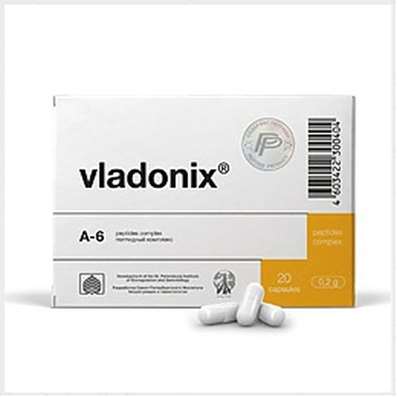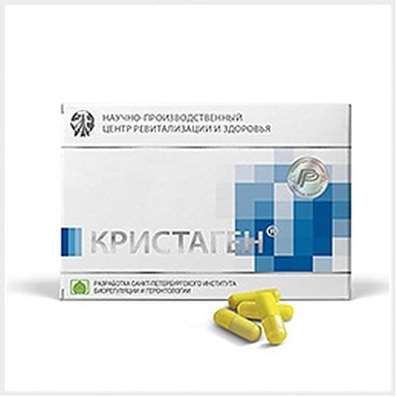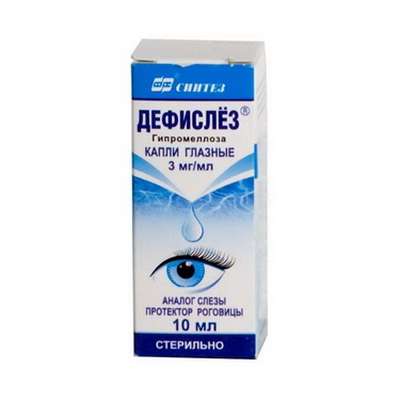Instruction for use: Sulpiride Belupo
I want this, give me price
Packing: capsules
Active substance: Sulpiride
ATX
N05AL01 Sulpiride
Pharmacological group:
Neroleptics
The nosological classification (ICD-10)
F10.4 Abstinent state with delirium: Alcoholic delirium; White fever alcoholic; Delirium; Delirious condition with alcoholism and drug addiction
F10.5 Alcoholic alcohol: Alcoholic hallucinations; Psycho-organic syndrome in chronic alcoholism; Alcoholic psychosis; White fever alcoholic; Delirium; Delirium with alcoholism; Acute alcoholic psychosis; Delirious condition with alcoholism and drug addiction; Acute alcoholic psychosis with autonomic disorders
F20 Schizophrenia: Schizophrenic Conditions; An exacerbation of schizophrenia; Schizophrenia; Chronic schizophrenia; Dementia praecox; Bleuler's disease; Psychotic discordant; Dementia early; The febrile form of schizophrenia; Chronic schizophrenic disorder; Psychosis of the schizophrenic type; Acute form of schizophrenia; Acute schizophrenic disorder; Cerebral Organic Insufficiency in Schizophrenia; Acute attack of schizophrenia; Schizophrenic psychosis; Acute schizophrenia; Sluggish schizophrenia; Sluggish schizophrenia with apathoabulic disorders; Acute stage of schizophrenia with agitation
F22 Chronic Delusional Disorders: Delusional Chronic Disorder; Delusional Disorders; Delusional syndrome; Paranoia; Chronic affective-delirious states
F22.0 Delusional Disorder: Delirium; Acute paranoid state; Othello Syndrome; Paranoid-hallucinatory state; Paranoid state; Paranoid delirium; paranoid psychosis; Paranoid delirium; Attack of delirium; The attack of polymorphic delirium; Psychotic disorder with a predominance of hallucinatory-paranoid symptoms and disorders of thinking; Anxious-delirious component; Anxiety and Paranoid Syndrome
F23 Acute and transient psychotic disorders: Psychogenic psychosis; Psychosis acute; Short-term psychotic disorder
F29 Inorganic psychosis, unspecified: Childhood psychoses; Psychomotor agitation in psychoses; Hallucinatory-delusional disorders; Hallucinatory-delusional syndrome; Intoxication psychosis; Manic-delusional disorders; Manic chronic psychosis; Manic psychosis; Acute psychosis; paranoid psychosis; Paranoid psychosis; Subacute psychosis; Presenile psychosis; Psychosis; Intoxication psychosis; Psychosis is paranoid; Psychosis in children; Reactive psychosis; Chronic psychosis; Chronic hallucinatory psychosis; Chronic psychosis; Chronic psychotic disorder; Schizophrenic psychosis
F32 Depressive episode: Adynamic subdepression; Astheno-adynamic subdepressive states; Asthenoadressive disorder; Astheno-depressive disorder; Asthenodepressive state; Astheno-depressive state; Major Depressive Disorder; Vyaloapatichesky depression with retardation; Double Depression; Depressive pseudodement; Depressive illness; Depressive mood disorder; Depressive disorder; Depressive mood disorder; Depressive state; Depressive disorders; Depressive syndrome; Depressive syndrome larviated; Depressive syndrome in psychoses; Depressed masks; Depression; Depression Depletion; Depression with the phenomena of inhibition within the framework of cyclothymia; Depression is smiling; Involutional depression; Involutionary melancholy; Involutional depression; Manic-depressive disorder; Masked Depression; Melancholic Attack; Neurotic depression; Neurotic depression; Shallow Depression; Organic depression; Organic depressive syndrome; Simple depression; Simple melancholic syndrome; Psychogenic depression; Reactive depression; Reactive depression with moderate psychopathological symptoms; Reactive depressive states; Reactive depression; Recurrent depression; Seasonal depressive syndrome; Severostatic depression; Senile Depression; Symptomatic Depression; Somatogenic depression; Cyclotymic depression; Exogenous depression; Endogenous depression; Endogenous Depressive Conditions; Endogenous Depression; Endogenous depressive syndrome
F48 Other neurotic disorders: Neurosis; Neurological diseases; Neurotic disorders; Neurotic condition; Psychoneurosis; Anxious-Neurotic Conditions; Chronic neurotic disorders; Emotional reactive disorders
G45.0 Vertebrobasilar arterial system syndrome: Vertebral-basilar insufficiency; Syndrome of the vertebral artery; Benign positional dizziness; Benign positional dizziness after neurosurgical operations
H81.0 Meniere's disease: Disease / Meniere's syndrome; Meniere's Disease; Meniere's syndrome; Labyrinth hydrops; Endolymphatic hydrops
H81.2 Vestibular neuronitis: Vestibular neuritis; Vestibular neuritis; Cochleovestibular neuritis
H81.3 Other peripheral vertigo: Vertigo of peripheral origin
H81.4 Vertigo of central origin: Dizziness of labyrinth origin; Vestibular Dizziness; Dizziness of vascular origin
K25 Stomach ulcer: Helicobacter pylori; Pain syndrome with peptic ulcer disease; Pain syndrome with peptic ulcer of stomach and duodenum; Inflammation of the gastric mucosa; Inflammation of the mucous membrane of the gastrointestinal tract; Benign ulcer of the stomach; Disease of the stomach and duodenum, associated with Helicobacter pylori; Exacerbation of gastroduodenitis against ulcer disease; Exacerbation of peptic ulcer; Exacerbation of gastric ulcer; Organic Gastrointestinal Disease; Peptic ulcer of the stomach and duodenum; Postoperative Stomach Ulcer; Recovering ulcers; Symptomatic Stomach Ulcers Symptomatic ulcers of the stomach and duodenum; Chronic inflammatory disease of the upper GI tract associated with Helicobacter pylori; Eradication of Helicobacter pylori; Erotic-ulcerative lesions of the stomach; Erosive lesions of the stomach; Erosion of the gastric mucosa; Peptic Ulcer; Stomach ulcer; Ulcerative lesions of the stomach; Helicobacteriosis
K26 Ulcer of duodenum: Pain syndrome with duodenal ulcer; Pain syndrome with peptic ulcer of stomach and duodenum; Disease of the stomach and duodenum, associated with Helicobacter pylori; Exacerbation of peptic ulcer; Exacerbation of peptic ulcer of the duodenum; Peptic ulcer of the stomach and duodenum; Recurrence of duodenal ulcer; Symptomatic ulcers of the stomach and duodenum; Eradication of Helicobacter pylori; Erotic-ulcerative lesions of the duodenum; Erosion-ulcerative duodenal lesions associated with Helicobacter pylori; Erosive lesions of the duodenum; Peptic ulcer disease of the duodenum; Ulcerative duodenal lesions
S06 Intracranial injury: Traumatic brain injury; Craniocerebral injury with predominantly stem lesion level; Condition after traumatic brain injury; Brain Injury; Injuries of the skull; Brain Injury; Brain Injuries; Contusion of the brain; Trauma of the brain; Craniocerebral injury; TBI; Traumatic brain injuries; Consequence of the BTT; Consequence of craniocerebral trauma; Consequence of CCT; CRANIAL INJURY; Traumatic brain injury; Traumatic cerebral; Concussion
Composition
Capsules 1 caps.
active substance:
Sulpiride 50 mg
auxiliary substances: corn starch - 31 mg; lactose monohydrate - 29 mg; corn starch pregelatinized starch - 7.2 mg; magnesium stearate 2.8 mg
composition of capsules: titanium dioxide - 2%; gelatin - up to 100%
Capsules 1 caps.
active substance:
Sulpiride 200 mg
auxiliary substances: corn starch - 112 mg; lactose monohydrate - 83 mg; magnesium stearate - 5 mg
composition of capsules: lid - titanium dioxide - 2%; gelatin - up to 100%; body - indigo carmine FD & C blue 2 - 0.11%; titanium dioxide - 1.1%; gelatin - up to 100%
Pharmachologic effect
The pharmacological action is neuroleptic.
Dosing and Administration
Inside, before eating, squeezed a small amount of liquid. The daily dose is divided into several doses.
It is not recommended to take the drug in the afternoon (after 16 hours) due to the increase in the level of wakefulness.
In all cases, use the minimum effective dose of the drug. If the patient's clinical condition allows, treatment should begin with low doses. The minimum effective dose is selected by gradually increasing the dose until the desired effect is achieved.
Adults
Short-term symptomatic treatment. If the usual methods of treatment are ineffective, the daily dose is from 50 to 150 mg for no more than 4 weeks.
Acute psychotic disorders, chronic psychotic disorders (schizophrenia, chronic non-schizophrenic delusions): daily dose is 200-400 mg of sulpiride 2 times a day. If necessary, the dose can be increased to 1200 mg 2 times a day (the highest recommended dose is 2,400 mg).
Children over 6 years old
Severe behavioral disorders (agitation, self-mutilation, stereotypy), especially with autism syndrome: daily dose is 5-10 mg / kg.
Doses for the elderly. The initial dose of sulpiride should be 1 / 4-1 / 2 doses for adults.
Doses in patients with impaired renal function. Due to the fact that sulpiride is excreted from the body mainly through the kidneys, it is recommended to reduce the dose of sulpiride and / or to increase the interval between taking individual doses of the drug depending on the values of Cl creatinine.
Table
| Cl creatinine, ml / min | Dose of sulpiride compared with standard,% | Increase in the interval between receptions of sulpiride, times |
| 30–60 | 70 | 1,5 |
| 10–30 | 50 | 2 |
| less 10 | 30 | 3 |
Release form
Capsules, 50 mg. For 15 caps. in PVC / aluminum blister. 2 bl. are placed in a cardboard box.
Capsules, 200 mg. For 12 caps. in a polypropylene bottle of white color with a screwed two-layer lid, which has protection from children (type: "push-open"), a ring to control the first opening and a stamped drawing from above. 1 f. placed in a cardboard box.
Conditions of leave from pharmacies
On prescription.
Storage conditions for Sulpiride Belupo
At a temperature of no higher than 25 ° C.
Keep out of the reach of children.
Shelf life of Sulpiride Belupo
4 years.
Do not use after the expiry date printed on the package.

 Cart
Cart





